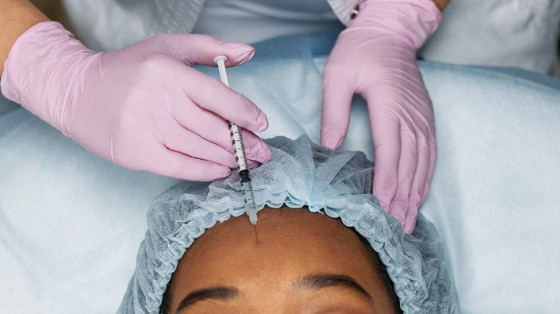Addressing the Signs of Ageing with Dermal Fillers
As our bodies change over time, we collect new wrinkles, smile lines and our cheekbones aren’t as high as they may once have been. There are a whole plethora of products that came to help reduce these signs of ageing.
Related: How to Lose Weight After 40
In this post, we look at what dermal fillers are, how effective they are, what they cost and what are the possible risks of addressing the signs of ageing with dermal fillers.
 What Are Dermal Fillers?
What Are Dermal Fillers?
As we age, the chemical composition of our tissue changes; you may not be aware of it, but collagen becomes less prevalent in tissue as we get older and so do many other compounds.
One of them is hyaluronic acid, which is a compound with a very high affinity for water when fully hydrated. It is a thick gel, some biologists have referred to it as a ‘goo’ compound or an inert tissue filler which is where dermal fillers got their name.
The application of dermal fillers involves artificially injecting hyaluronic acid into the areas of the face where they would have normally been found in a high concentration.
This can lift and support the tissue there, mitigating any wrinkles that may have formed in that area.
Risks and Side Effects of Dermal Fillers
Dermal filling is considered a minimally invasive procedure in the UK and generally, it is very safe.
This does not mean that there aren’t some risks or possible side effects; the most common side effect is localised bruising. But any of this bruising, redness or discomfort should fade within a few hours of the procedure and be completely gone within 2 weeks.
If any symptoms of swelling or pain continue longer than this, you should make an appointment with your doctor.
Other side effects, like abscesses from unsanitary injections or filler being mistakenly injected into blood vessels, is more a case of the misuse of filler by poorly trained practitioners than being truly a side effect of hyaluronic acid when it is being responsibly applied.
Can I get dermal fillers?
There are very few restrictions on receiving dermal fillers, but it has not been conclusively proven that fillers are safe when pregnant or breastfeeding.
Also, if you intend to receive a facial massage or any other activity that would result in pressure being applied to your face within a few hours of receiving dermal fillers, you should rebook your appointment for another time.
During these first few hours after receiving dermal fillers, the hyaluronic acid is mobile under the tissue and can become displaced.
Dermal filler treatment: how much does it cost?
Due to the status of dermal fillers being non-invasive treatments in the UK and being able to be performed by a person without medical training, there is a wide range of prices. You can find them out through quotations from any clinic or dental surgery offering dermal fillers W1.
There should be a degree of scepticism with cheaper dermal fillers, this is partly because of the source of the fillers that your practitioner might be using. More established practices associated with dentists and medical institutions will have access to medical supply chains.
Hyaluronic acid from these sources comes with an additional cost, but has a guarantee in terms of quality and being non-counterfeit products.
Less established practitioners operating out of beauty salons and hairdressers will often source their hyaluronic acid from online suppliers with far less guarantee of the quality of their products.
Diluted hyaluronic acid has been known to be mis-sold in counterfeit preparations as well as low-quality syringes, creating a buyer beware mentality with low-cost dermal fillers. So, always proceed with caution.


